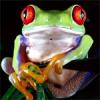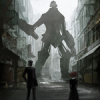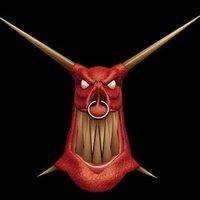Scanning Art While Avoiding Pixelization
As this is Post No. 1 for me, if this section of the forum is not the appropriate place to ask this question, please let me know. I would also appreciate it if you directed me to the correct place.
I have drawn a few pieces of concept art that, in my eyes, look great on paper. However, when I scan the art in order to put them online, they are automatically pixelized. The differences are noticeable.
Is there a way to work around this? If not, is there a way, aside from having to minimize the image, to minimize pixelization?
Anyone? Are there any depixelating programs? I only have Paint and Jasc Paintshop Pro. If you look at any instruction booklet for a video game, any drawn art turns up very clear, the way it was drawn, without pixels. How can one do this?
Are you using the maximum DPI settings on your scanner?
You could use a smoothing filter on your image to get rid of some of the pixelation effect, but it will also "blur" it. You can never really get a higher definition image from a lower definition image.
Also a "sharpening" filter may help (after the smoothing filter).
[Edited by - Cambo_frog on July 26, 2008 5:35:12 PM]
You could use a smoothing filter on your image to get rid of some of the pixelation effect, but it will also "blur" it. You can never really get a higher definition image from a lower definition image.
Also a "sharpening" filter may help (after the smoothing filter).
[Edited by - Cambo_frog on July 26, 2008 5:35:12 PM]
For the love of god, please tell me that you've just omitted your error checking code for brevity, and you don't really assume that all those functions succeed.
Do it at the highest dpi you will be working with. You don't want to do it any higher or else you'll get blurring when you resample it to a lower resolution after it is scanned.
But usually, the best options are:
1.) Scan to a lossless format, aka no jpeg
2.)Scan at the highest dpi you'll be working with. If you have no idea, then try 300 dpi and lower or raise it from there.
3.)Scan it at full color. If you did a drawing, the scanner may automatically assume it should be scanned as grayscale, but this generally produces worse results than a full color scan, even for a non-color piece of work.
You also should be aware, that if you scan something into digital form, it will look pixelly unless you're viewing it at 100%. The pixelly-ness occurs when you try to view an image shrunk down without resampling the pixels.
But usually, the best options are:
1.) Scan to a lossless format, aka no jpeg
2.)Scan at the highest dpi you'll be working with. If you have no idea, then try 300 dpi and lower or raise it from there.
3.)Scan it at full color. If you did a drawing, the scanner may automatically assume it should be scanned as grayscale, but this generally produces worse results than a full color scan, even for a non-color piece of work.
You also should be aware, that if you scan something into digital form, it will look pixelly unless you're viewing it at 100%. The pixelly-ness occurs when you try to view an image shrunk down without resampling the pixels.
-------------------------Only a fool claims himself an expert
Quote: Original post by Jarrod1937
Do it at the highest dpi you will be working with. You don't want to do it any higher or else you'll get blurring when you resample it to a lower resolution after it is scanned.
I agree with your other recommendations, but scanning at a high resolution is usually better; the image needs to be resampled as well as possible for rotation by a small angle (a correction that's needed for most scans), and more pixels mean more control for retouching, denoising, descreening etc.
There is no reason to expect blurring when subsampling an image, except when there are high frequency details that cannot be represented at the desired low resolution; in this case scanning the original at an insufficient DPI setting merely trades "blur" (actually a decent low-pass approximation of the image) for sharp-looking but incorrect aliasing.
Omae Wa Mou Shindeiru
Quote: Original post by LorenzoGattiQuote: Original post by Jarrod1937
Do it at the highest dpi you will be working with. You don't want to do it any higher or else you'll get blurring when you resample it to a lower resolution after it is scanned.
I agree with your other recommendations, but scanning at a high resolution is usually better; the image needs to be resampled as well as possible for rotation by a small angle (a correction that's needed for most scans), and more pixels mean more control for retouching, denoising, descreening etc.
There is no reason to expect blurring when subsampling an image, except when there are high frequency details that cannot be represented at the desired low resolution; in this case scanning the original at an insufficient DPI setting merely trades "blur" (actually a decent low-pass approximation of the image) for sharp-looking but incorrect aliasing.
Sort of, the program will take 4 or so pixels, analyze them, then come up with a single pixel approximate. How these 4 pixels are analyzed depends on the resampling type, but eitherway blurring is the result in my experience. You unneededly loose detail and sharpness by resampling by a large amount, even if the detail can fit inside the lower resolution since all resampling i've seen is an approximation, which is about the best that can be done.
But scanning or working with imagery at the final, used, resolution you're ensuring that every pixel is exactly how you wanted it, something which resampling may ruin towards the end of the process.
If you want more control and more precision when editing images, then change your per channel bit depth to 16 bits per channel. This will make your image a 48 Bit image, which the computer can now process with more precision. Though of course you will need to change it back to 24 bits when you're done (unless your final application actually supports 48 bit color).
-------------------------Only a fool claims himself an expert
Scanners, Part 1: Buying Tips
Scanners, Part 2: Ten Tips for a Clean Scan
Scanners, Part 3: Putting the Pieces Together
I suspect your problem is inadequate resolution, such that supersampling and other approximation methods leave a blurry mess which causes you to disable them, resulting in very jagged and pixilated scans.
Scanners, Part 2: Ten Tips for a Clean Scan
Quote: an excerpt:
For black and white line work that will be converted to bitmap images or scanned in "black and white" mode, use 1200 dpi or more. This type of artwork uses only black and white pixels. Because there is no gray to help blur and smooth the curves on your line, you need a very high resolution to avoid the blocky, pixelated edges.
Scanners, Part 3: Putting the Pieces Together
I suspect your problem is inadequate resolution, such that supersampling and other approximation methods leave a blurry mess which causes you to disable them, resulting in very jagged and pixilated scans.
Quote: Original post by Jarrod1937
You unneededly loose detail and sharpness by resampling by a large amount, even if the detail can fit inside the lower resolution since all resampling i've seen is an approximation, which is about the best that can be done.
But scanning or working with imagery at the final, used, resolution you're ensuring that every pixel is exactly how you wanted it, something which resampling may ruin towards the end of the process.
Maybe we are talking about two different things. If you "work with imagery", "ensuring that every pixel is exactly how you wanted it" you are drawing your own artwork using the scan as a mere starting point, so it makes sense to start working at the final (low) resolution as early as possible.
On the other hand, I assumed the task was the faithful and good-looking reproduction of a photo or drawing, which can be processed better at higher resolution and for which the final resolution doesn't matter much, so resampling to a low resolution should be one of the last steps.
Most detail and sharpness I've found in excessive resolution scans and deliberately "lost" with median filters, aggressive colour manipulations and mere resampling is actually undesirable: dust particles, sensor noise, paper texture, halftoning dots.
For example, would you rather see a hair in a high resolution scan and restart from the beginning after cleaning, or fail to notice the hair's contribution to many wrong colour pixels in a low resolution scan?
Omae Wa Mou Shindeiru
I found a program a while ago that had a great algorithm for extracting/resizing line-art from bitmaps and preserving original details... but I can't find it anymore :(.
Maybe give this site a shot though, it seems to use some decent algorithms: http://www.reshade.com
Maybe give this site a shot though, it seems to use some decent algorithms: http://www.reshade.com
. 22 Racing Series .
This topic is closed to new replies.
Advertisement
Popular Topics
Advertisement
Recommended Tutorials
Advertisement








